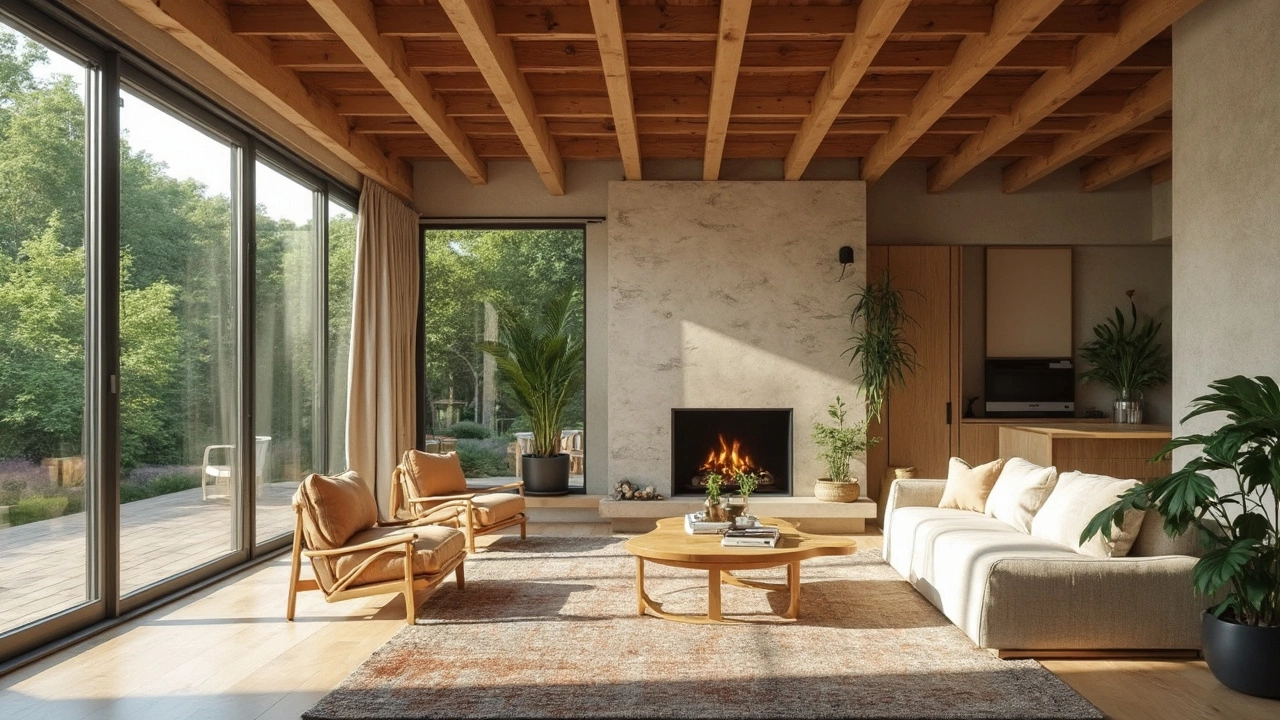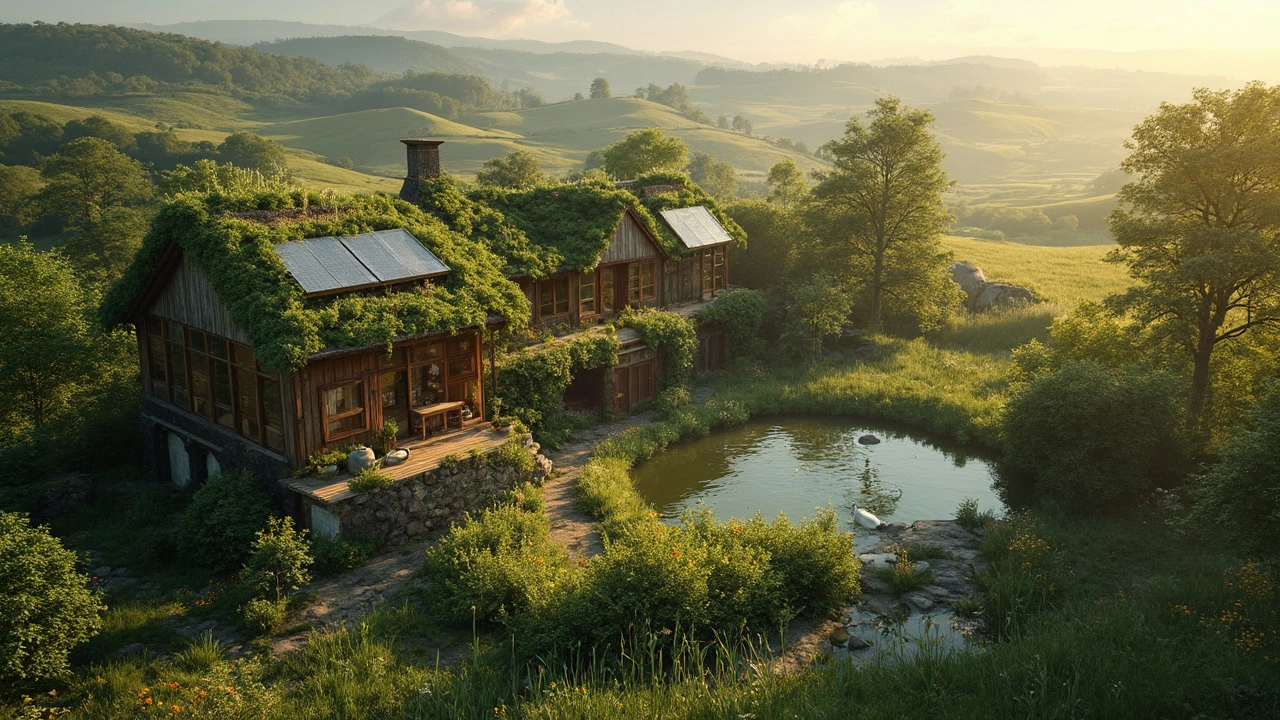Most billionaires snap up huge mansions, but have you heard about the latest craze for eco-friendly cottages? Turns out, the richest people out there are dropping serious cash on sustainable dream homes. But which billionaire went all out and bought the most expensive one in the world?
This isn’t just about showing off—or building something wild for the next Hollywood movie set. These eco-mansions come packed with techy features, clever ways to save energy, and even on-site farms or forests. The best part? You can actually steal some of their cool ideas for your own place, no matter your budget. If you’ve ever wondered how far you can go with green living (or just want to gawk at next-level luxury), you’re in the right spot.
- The World’s Priciest Eco Cottages: Who’s Topping the List?
- Green Luxury: What Makes These Mansions Eco-Friendly
- Coolest Features and Surprising Facts
- How to Add Eco Upgrades to Your Own Space
The World’s Priciest Eco Cottages: Who’s Topping the List?
When billionaires go green, they don’t exactly hold back. One name that pops up again and again in the world of eco-friendly cottages is Bill Gates. He owns a house called Xanadu 2.0 by Lake Washington, which reportedly cost over $125 million to build. The crazy part? It’s not just massive—it’s packed with energy-saving systems and reclaimed materials. Some folks call it a “cottage” as a tongue-in-cheek joke because, well, it’s about as far from a rustic cabin as you can get.
But Gates isn’t alone. Larry Ellison, the Oracle co-founder, bought a house in Malibu that’s fully solar-powered and uses rainwater harvesting. It set him back around $110 million. Then there’s Richard Branson’s eco-paradise, Necker Island, which is made up of several luxury cottages powered by wind and solar. The total value? Roughly $100 million.
| Billionaire | Location | Reported Cost | Notable Eco Features |
|---|---|---|---|
| Bill Gates | Lake Washington, USA | $125M+ | Geothermal pumps, reclaimed wood, smart energy systems |
| Larry Ellison | Malibu, USA | $110M | Full solar, rainwater harvesting, sustainable landscaping |
| Richard Branson | Necker Island, BVI | $100M | Wind & solar, eco-building materials |
So, who takes the top spot in terms of price? That crown still sits with Bill Gates. His luxury real estate mixes crazy tech with eco ambitions, proving you can go big and still be green—and maybe make your neighbors do a double take.
Of course, these properties raise the bar for anyone thinking about a sustainable mansion. But honestly, the tech they use is getting way more common (and cheaper) every year. That means you don’t actually need a billion-dollar budget to steal some of these cool ideas for your own eco-friendly cottage.
Green Luxury: What Makes These Mansions Eco-Friendly
It’s wild how eco-friendly cottages owned by billionaires are pretty much the opposite of what you picture when you hear “cottage.” Forget rickety wood and drafty windows—think triple-glazed glass, recycled steel, solar panels, and everything controlled by an app. The world’s priciest sustainable mansions have to go way beyond reusable grocery bags to earn that “green” brag.
Just take a look at Mukesh Ambani’s Antilia in Mumbai, which clocks in at $2 billion. This high-rise city “cottage” collects rainwater and reuses it, runs smart lighting, and has a built-in garden on every level. Can a place with three helipads call itself eco? Maybe not on everything, but these billionaires love their green features.
What sets these luxury real estate gems apart usually boils down to:
- Solar Power: Massive solar fields or rooftop panels power entire houses, pools, and sometimes guest cottages. Jeff Bezos’s Medina estate can power most of its own needs this way.
- Rainwater Harvesting: With collection systems that actually work, these mansions use rainwater for toilets, irrigation, or sometimes drinking water after filtration.
- Smart Tech Everywhere: Apps and sensors control lights, heating, and appliances, making sure nothing’s running if nobody’s in the room. This cuts energy waste big time.
- Sustainable Building Materials: Builders skip fancy marble flown from far away and use reclaimed wood, recycled steel, even hempcrete or cork.
- Heat and Cooling Tricks: Green roofs, lots of south-facing glass, and geothermal heating and cooling keep homes comfy and shrink bills.
Here’s a quick look at just how committed these owners get when building their green palaces:
| Property | Key Eco Features | Estimated Cost |
|---|---|---|
| Antilia (Ambani) | Rainwater reuse, vertical gardens | $2B |
| Beverly Hills Mansion (Bezos) | Solar panels, reclaimed wood | $165M |
| The Promised Land (Oprah Winfrey) | Drought-resistant landscaping, smart irrigation | $88M |
Some owners go as far as making their own organic farms onsite. Oprah’s home has gardens that supply her kitchen. And Bill Gates’s house (nickname: Xanadu 2.0) captures and recycles all stormwater and uses earth-sheltering to help with heating and cooling.
It’s clear: you don’t need to live off the grid in a tiny house to make a real dent. Even in the world of glitz and glam, the best eco-friendly cottages are all about smart choices, recycled stuff, and high-tech systems that cut waste down to size.

Coolest Features and Surprising Facts
When billionaires build eco-friendly cottages, they don’t hold back. We’re talking next-level green architecture and amenities that mix sustainability with serious style. For example, Jeff Bezos’ waterfront mansion in Washington isn’t just expensive—it’s loaded with solar panels, massive rainwater harvesting systems, and even home-grown food gardens. Elon Musk claims his Boxabl prefab tiny house is eco and under $50,000, but his main digs go all-out with energy-efficient tech and recirculating water systems. And let’s not forget Larry Ellison’s Carbon Beach mansion, where geothermal energy heats the pool and lush native plants keep landscaping water use low.
What’s wild is how much the tech behind these homes has advanced. Some, like Bill Gates’ Xanadu 2.0, run on automated smart systems that control everything from lights to heating so nothing’s wasted. Others build entire walls out of insulated glass to keep heat in and costs down, or even install wind turbines if there’s room. Even the priciest eco cottages, reaching well over $100 million, are now including green roofs, recycled materials, and advanced air filtration to keep things healthy inside.
Here’s a quick breakdown of some features found in the most expensive eco-friendly cottages owned by billionaires:
- Full-roof solar panel arrays with battery storage for backup power
- Rainwater collection tanks (some hold more than 10,000 gallons!)
- On-site organic gardens and greenhouses for fresh, hyper-local produce
- Geothermal heating/cooling to cut energy costs
- Green roofs covered in living plants to reduce heat and boost air quality
- Home automation systems that kill energy waste
Now for some stats. Just check out how much these billionaires invest in their eco-friendly tech:
| Billionaire | Estimated Value of Eco Upgrades | Coolest Feature |
|---|---|---|
| Bill Gates | $15 million | Automated energy management |
| Jeff Bezos | $10 million | Ultra-efficient water systems |
| Larry Ellison | $8 million | Geothermal pool heating |
So, not only are these luxury real estate projects ultra-pricey, but the green upgrades alone cost more than most regular homes. If you ever wondered how the 1% live sustainably, this is it—big, bold, and actually helpful for the planet.
How to Add Eco Upgrades to Your Own Space
You don’t need billionaire money to make your own home feel a bit like one of those eco-friendly cottages. A few simple changes can cut bills, shrink your carbon footprint, and bring some of that luxury green vibe right to your front door.
First up: think about energy efficiency. Swapping old lights for LEDs cuts electricity use for lighting by as much as 80%. Don’t forget about insulation—modern insulation keeps heat in and noise out, and it’s one upgrade that pays for itself over time. Programmable thermostats, like Google Nest or Ecobee, can trim another 10% from your annual energy bill.
- Solar panels: Prices have dropped over 50% in the last decade. Even a small solar setup can slice hundreds off yearly power costs.
- Rainwater collection: Catch rainwater in barrels for your garden or cleaning. It’s cheap and easy, and some cities offer local tax breaks.
- Low-flow fixtures: Swap out showerheads and toilets for low-flow models. You’ll use less water without even noticing.
- Smart home devices: Plugs and thermostats let you control systems remotely and catch waste before it kills your savings.
- Native landscaping: Planting local or drought-resistant plants (instead of a thirsty lawn) saves water and gives you less to mow.
Don’t believe little changes add up? Check this out:
| Upgrade | Average Cost | Approx. Annual Savings |
|---|---|---|
| LED Lighting | $100 | $80 |
| Programmable Thermostat | $150 | $150 |
| Water Saving Fixtures | $200 | $100 |
| Solar Panels | $15,000* | $1,500 |
*Based on medium sized home set-up; prices vary by location.
If you want your home to scream “sustainable mansions” (even if it’s not a mansion), try out reclaimed woods, toxin-free paints, or upcycled materials in your next project. Luxury isn’t always about price—it’s about smart choices, too.
